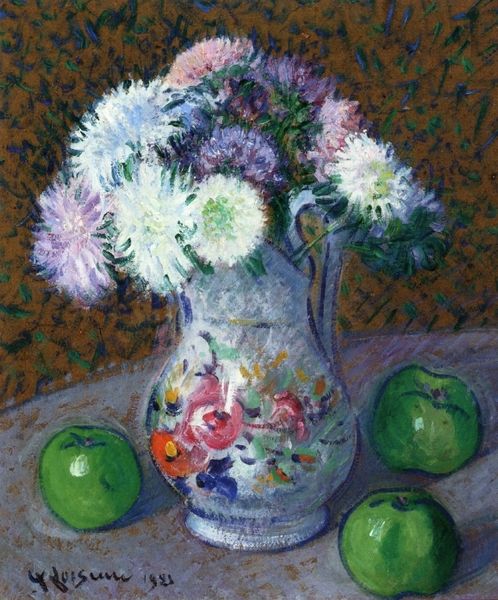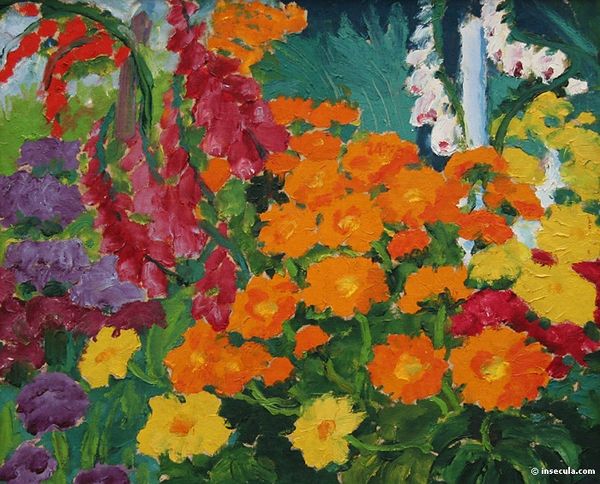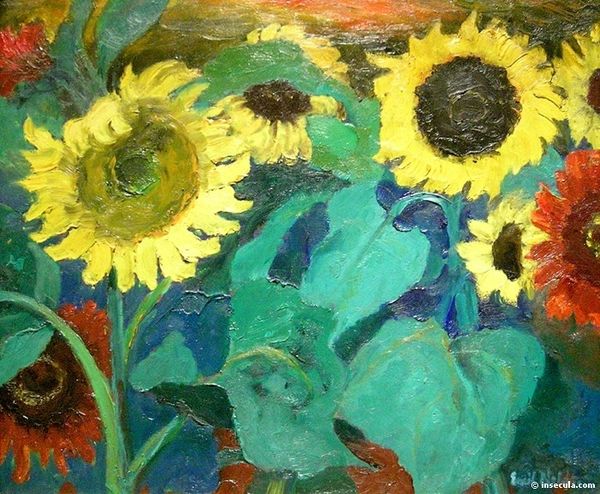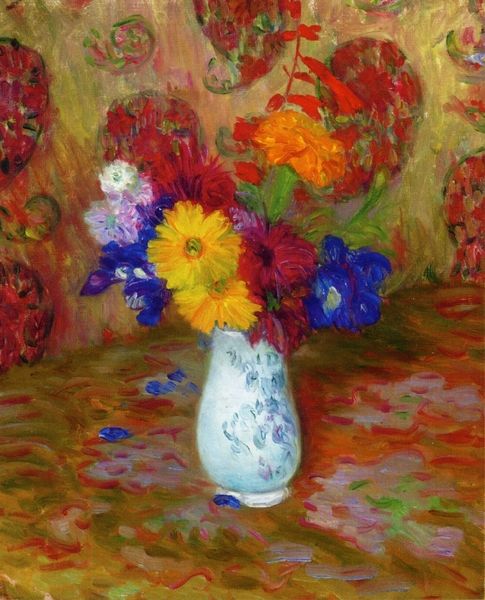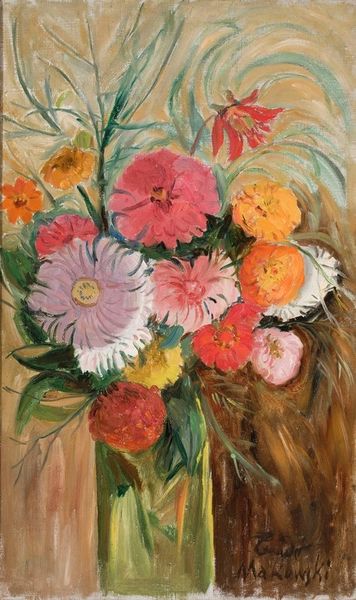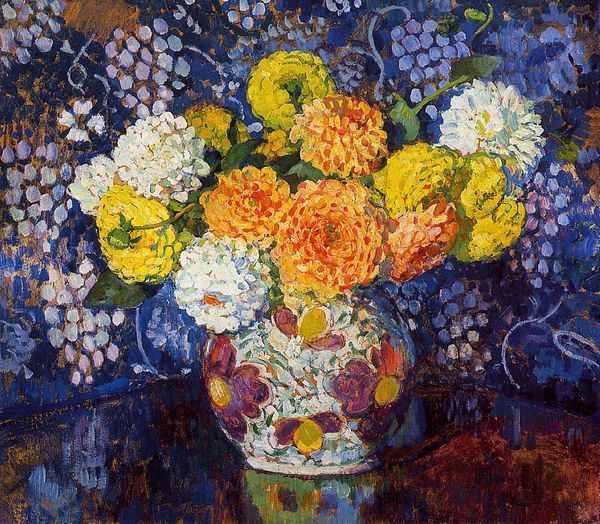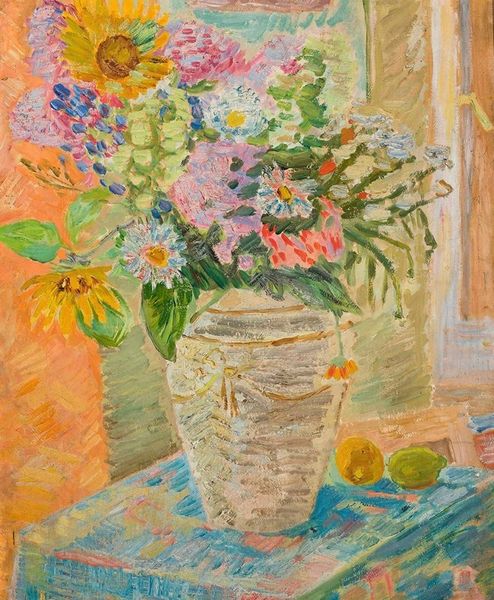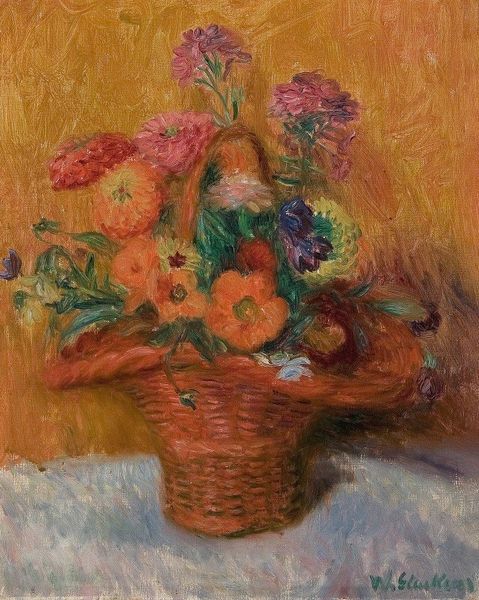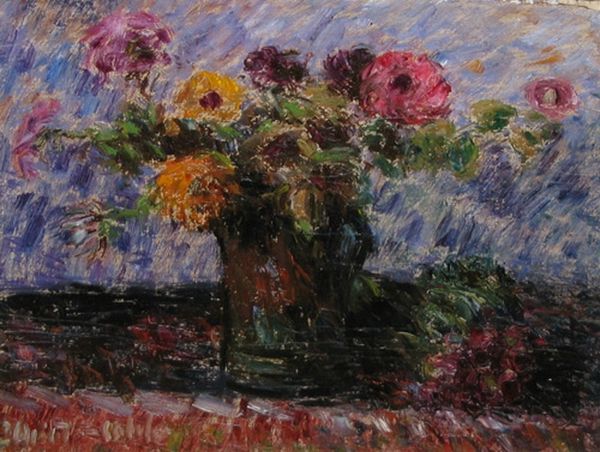
Dimensions: 33 x 40 cm
Copyright: Public domain
Editor: So, here we have Theo van Rysselberghe's "Yellow Bouquet" from 1917, oil on canvas. There's a real immediacy to it, a vibrancy in the colours and a freedom in the brushwork. What do you see in this piece, beyond a still life? Curator: I see a challenge to the established order, wouldn't you say? Look at the time it was painted – 1917, during the First World War. In a world of immense turmoil, artists like Van Rysselberghe turned inward, focusing on domestic scenes and the beauty of the everyday. Doesn’t the emphasis on colour and light feel like an intentional move away from the darkness and the industrialized war? Editor: That’s fascinating! So the bouquet becomes almost a symbol of resistance, a quiet assertion of life against death. Do you think there's a feminist angle here too, perhaps reflecting the growing role of women in society during that period? Curator: Absolutely. Think about the domestic sphere, traditionally the domain of women. By celebrating it, Van Rysselberghe elevates women’s experiences, placing value on the spaces and objects they interacted with daily. Moreover, the very act of painting, particularly en plein air, could be interpreted as a move toward personal and artistic liberation at the time. Isn’t that striking? Editor: That’s a great point, it reframes the bouquet as this quiet yet powerful emblem of personal autonomy. What I find striking is how this domestic subject becomes, through the artist's intention, a loaded statement on art, politics and culture. Curator: Exactly. It's a potent reminder that even seemingly simple subjects can carry profound socio-political weight, challenging us to constantly question the narratives that underpin art history. Editor: This has really deepened my appreciation. Thank you for drawing out those important contextual layers. Curator: My pleasure, these layered perspectives are essential for art's evolving story.
Comments
No comments
Be the first to comment and join the conversation on the ultimate creative platform.
